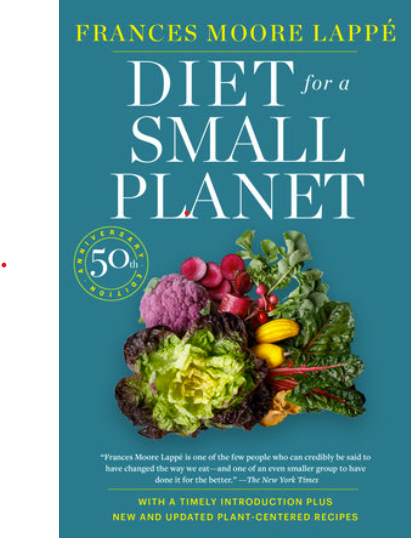Join Health Affairs for a virtual conversation between me and Angela Odoms-Young of Cornell University discussing the evolution of US food and nutrition policy, the current policy landscape, and thoughts on what lies ahead. It’s at 1:00 p.m. EDT. To join the Webinar, register here.
Weekend reading: Diet for a Small Planet at 50
Frances Moore Lappé. Diet for a Small Planet. 50th Anniversary Edition. Ballantine, 2021.

Fifty years? Really? I used the first edition of this book as a text in the first nutrition class I ever taught—in the Brandeis University Biology Department in spring 1976.
The book had been out for five years and already was having a huge impact. Its observation that most of the world’s grain is used to feed animals, and mixing grains with beans produced all the essential amino acids anyone needed, came as a revelation. If only we used that grain to feed people, we could solve problems of world hunger.
And this was before 40% of US corn was used to produce ethanol fuel for cars.
The new edition has enough of the old naterial in it to understand why this book merited editions in years 10 and 20 and, now, 50.
What’s new are the preface and introduction to the 50th anniversary edition, a new look at myths about protein, and more than 100 pages of plant-forward recipes donated by lots of cooks and chefs.
The issues Lappé wrote about in 1971 are very much still with us. Only the numbers have changed.
Here is just one example:
But I have learned that hunger can exist anywhere, within any society that has not accepted the fundamental responsibility of providing for the basic needs of its most vulnerable members—those unable to meet their own needs. And ours, sadly, is such a society. I found myself feeling ashamed when i learned that other societies with which we might compare ourselves—France, Sweden, West Germany—demonstrate by their welfare programs that they do accept this social responsibility. In a recent study of social benefits to needy families with children in eight major industrial countries, the United States ranked among the lowest. (p. 101).
She could have written this yesterday.
If only we could have acted to make her observations out of date.

